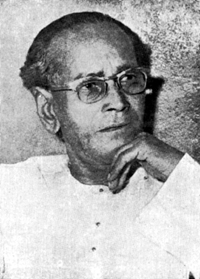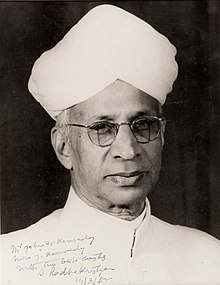The closing years of Sri Ramakrishna’s life, though full of pathos, were as sublime and graceful as the mellowed beauty of a glorious sunset. Dakshineswar, once a silent and solitary retreat, was now the resort of hundreds of earnest souls who crowded his small room from morning till night to receive spiritual guidance. Sri Ramakrishna, without the least consideration for his personal comfort or convenience, always ministered to the
spiritual needs of these eager aspirants with his usual alacrity and zeal. Sometimes his small room would remain packed with devotees for hours together, and he could hardly get a moment’s respite for meals as also for giving relaxation to his overtaxed physical frame. His heart beat with every throb of all the hearts that ached, known and unknown, and he gave out his whole being unto them in the fullness of love and compassion. He often inspired the hearts of these sincere souls with his devotional songs and illuminating gospel as also with the narration of his own spiritual struggles and realizations. Sometimes his room would ring with the swelling cadence of songs sung with unspeakable fervour by the assembled devotees. The whole atmosphere remained surcharged with spirituality, and everyone that came into intimate touch with the Master felt a maddening enthusiasm for God-realization. There is a saying that when the flower blooms, bees come uninvited to suck the honey therefrom. This was exactly the case with Sri Ramakrishna. Attracted by the Master’s spiritual life, persons of all denominations and stations of life began to flock to him.
His was indeed a life which furnished a happy solution to the manifold intricate problems of human existence. The entire spiritual history of humanity was compressed, as it were, into the brief span of fifty years that the Master was destined to live on earth, and during this period there was practically no religion he did not live and no Truth he did not realize. His life thus became a mighty confluence of the diverse streams of human thought, where the weary pilgrims could meet and slake their spiritual thirst. No wonder that the universal message of such a unique personality was hailed with enthusiasm by all irrespective of caste, creed, or colour.
But his feeble health began to break down under the stress of constant ecstasies and frequent religious discourses to numerous devotees. Sometimes like a cross child he would complain to the Mother: ‘Why do You bring here all these people who are like milk diluted with five times its own quantity of water? My eyes are destroyed with blowing the fire to dry up the water. My health is gone. It is beyond my strength. Do it Yourself if You want it done. This (pointing to his body) is nothing but a burst drum, and if You go on beating it day in and day out, how long do You think it will last?’ But in spite of this tremendous physical exertion, he did not in the least relax his effort to give spiritual comfort to the distressed souls, even if they came to him at odd hours. He never turned anybody away. His temporary sense of bodily weakness was swept away by the spirit of his infinite compassion for ignorant and suffering humanity. ‘Let me be condemned to be born over and over again even in the form of a dog,’ he would burst out saying, ‘If by doing so I can be of help to a single soul. I would give up twenty thousand such bodies to help one man. It is glorious to help even one man.’So deep was his solicitude for all that he sometimes blamed himself for falling into trances, as they absorbed much of the time that could otherwise have been utilized for the spiritual benefit of others.
During the sultry months of the year 1885 the Master suffered a great deal from the terrible heat, which was alleviated by the taking of ice the devotees brought to him daily. But this frequent
use of ice produced a pain in the throat which was at first so trifling as to pass unnoticed. But in a month it became so aggravated that the disciples grew alarmed and called in a specialist in diseases of the throat. Notwithstanding the prescription of various remedies, his condition did not show any sign of improvement. On days of the full and the new moon, the pain became more acute; it was impossible for him to eat solid food. The doctors diagnosed the disease as ‘Clergyman’s sore throat’. The Master carried out the doctors’ injunctions faithfully, except on two points, namely checking the divine ecstasies and giving rest to the vocal organs. As soon as he spoke of God, he lost all consciousness of the body and fell into Samadhi. Nor would he stop speaking to people who, afflicted by the world, came to him for solace. No wonder his health broke down.
The disease proved more and more obstinate. A house was soon engaged at Shyampukur in Calcutta, and in the beginning of October 1885, the Master was removed to the new premises to provide better facilities for medical care. Dr. Mahendra Lal Sarkar, the then veteran homoeopath and the founder of the Association for the Cultivation of Science, was entrusted with the treatment of Sri Ramakrishna. When Dr. Sarkar learnt that the devotees who had brought the Master to Calcutta for treatment were defraying all expenses, he offered his services free as a labour of love.
The devotees now keenly felt the necessity of securing able hands to prepare the Master’s food and to nurse him by night as well as by day. It could be done only through the combined efforts of the Holy Mother and the young devotees. News was accordingly sent to the Holy Mother at Dakshineswar. The Holy Mother, as was her wont, throwing aside all considerations of personal comfort, volunteered to come at once to Shyampukur and undertake the task. Thus when the question of preparing the Master’s diet was settled, attention was given to the matter of night duty. Narendra Nath took this charge upon himself and began to pass the night at Shyampukur. Fired by his example, a few sturdy youths such as Gopal Junior (a new recruit), Kali, and Shashi lent their aid. Narendra’s sacrifice for the sake of the Master, his inspiring talks and association with them made an indelible impression upon their minds; and banishing all selfishness, they resolved to consecrate their lives to the noble ideal of service unto the Guru and realization of God. It is interesting to note that though only four or five were attracted to this service of love at its initial stage at Shyampakur, the number of such workers was almost quadrupled towards the last. The guardians of the boys, seeing them neglect their studies and stay with the Master, grew alarmed and had recourse to various means to bring them back to their homes. But the boys, with the glorious object lesson of Narendra Nath before them, stood firm as rocks. The selfless enthusiasm of the devotees centred on a common object of adoration, immediately binding them together; and the Ramakrishna Brotherhood, though it had its origin at Dakshineswar, owed most of its growth to the holy associations of Shyampukur and the Cossipore garden.
Dr. Mahendra Lal Sarkar took up in right earnest the task of treating the Master. After the examination was over he would spend hours with Sri Ramakrishna in various religious discourses.Thus by degrees Dr. Sarkar became more and more attached to the Master. As a result of this intimate relationship established between the Master and Dr. Sarkar, the latter’s admiration for the former soon ripened into a kind of worship.
While at Shyampukur Sri Ramakrishna one day had a vision of his subtle body emerging from the gross sheath and moving about the room. It had a number of sores on the back. He was puzzled by the sight, but it was made clear to him that the touch of profane people had caused those sores on the body. They themselves had been purified, but they had left the suffering arising from their own sins with him. When he described this vision to his devotees, Narendra and some others observed that the Master’s vision was in conformity with the doctrine of vicarious atonement postulated in certain religions like Christianity and Vaishnavism.
More than two months passed, but there was no sign of improvement. On the contrary the condition of the Master was gradually going from bad to worse. When treatment proved ineffectual, Dr. Sarkar advised a change to some garden-house outside the city. Accordingly the spacious garden-house of Gopal Chandra Ghosh at Cossipore was hired. In the afternoon of the 11th of December 1885, Sri Ramakrishna was removed to the new premises.

